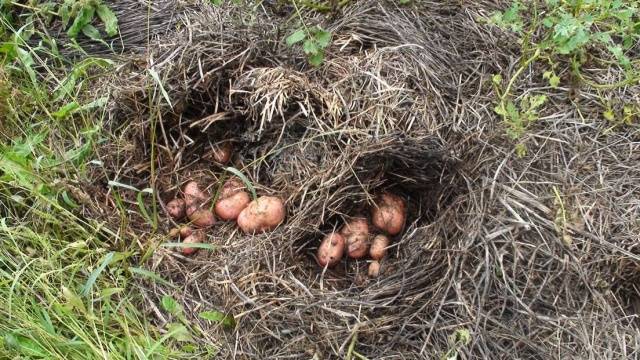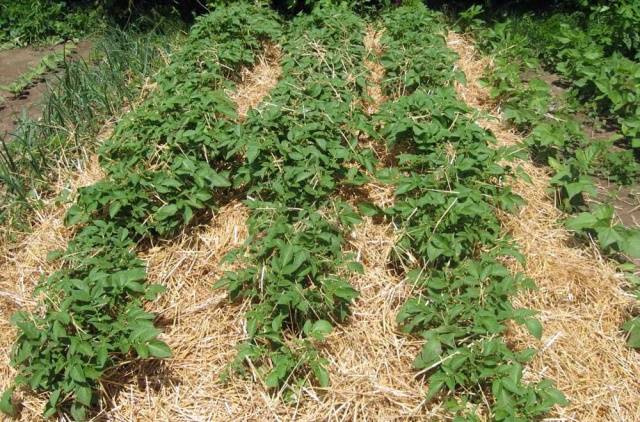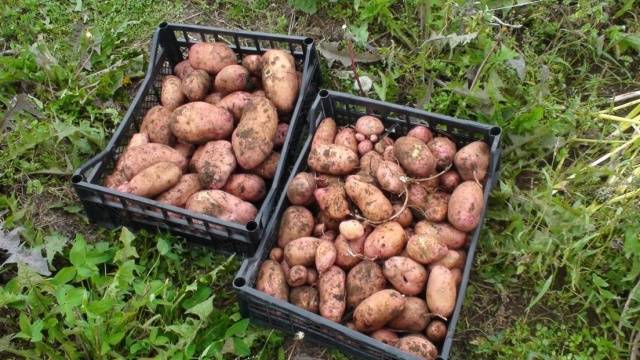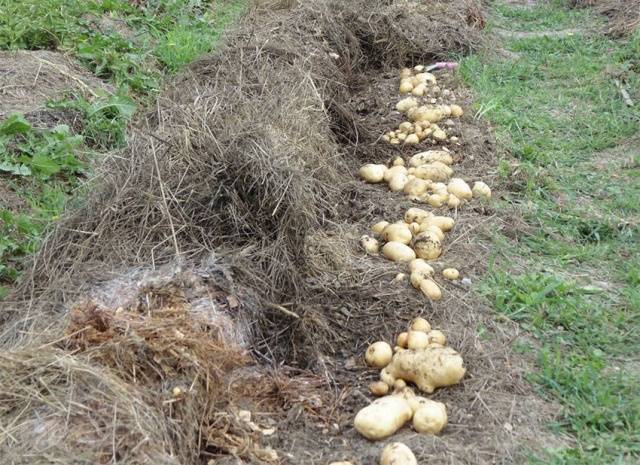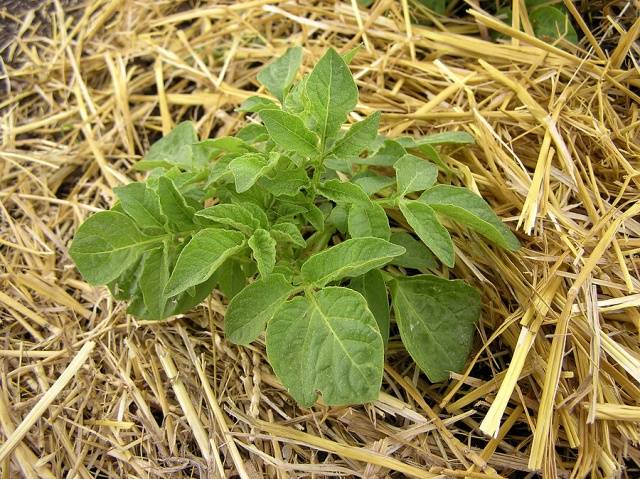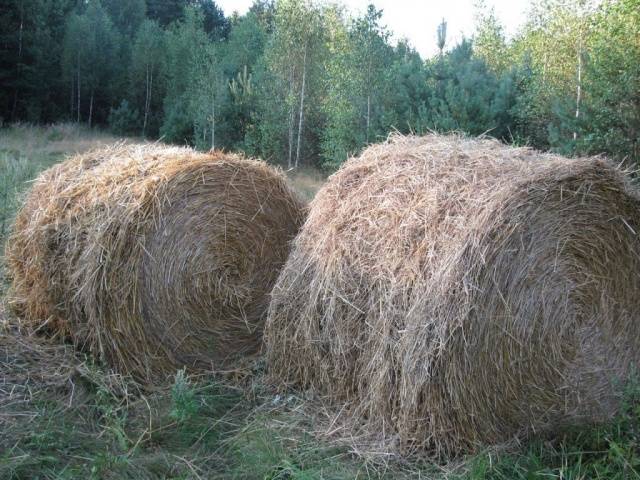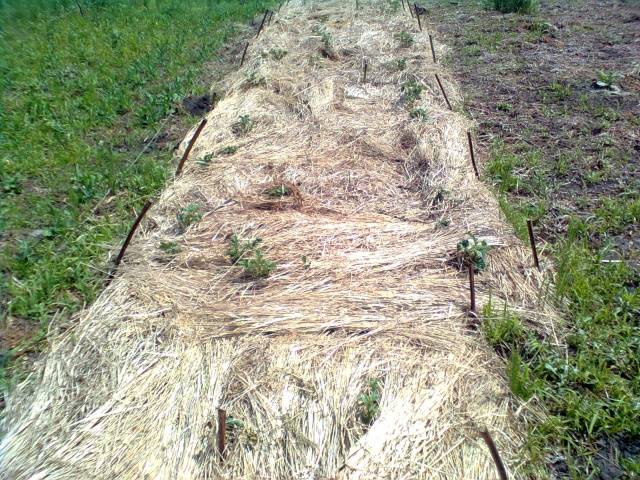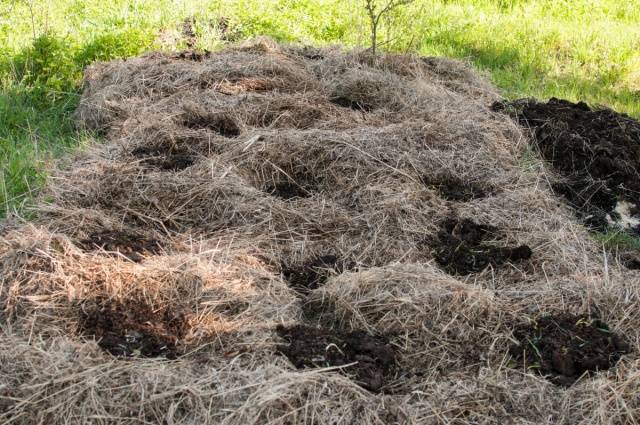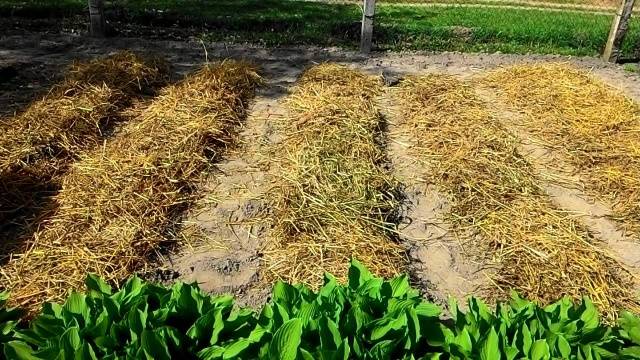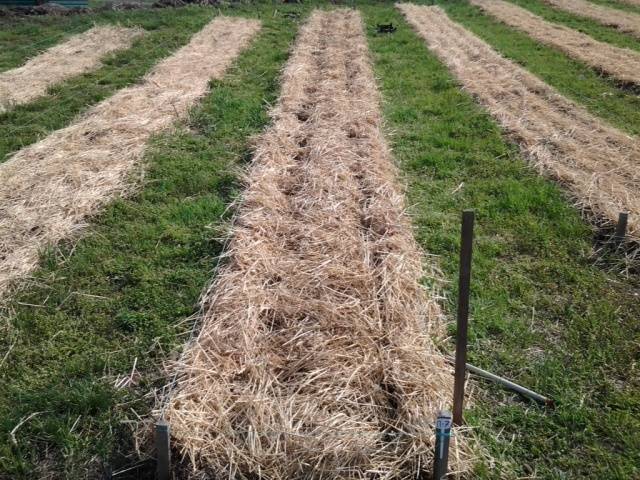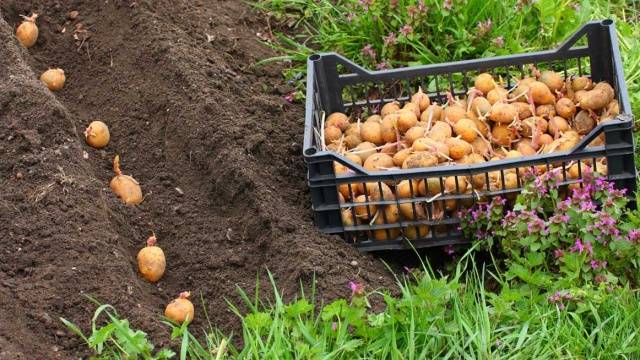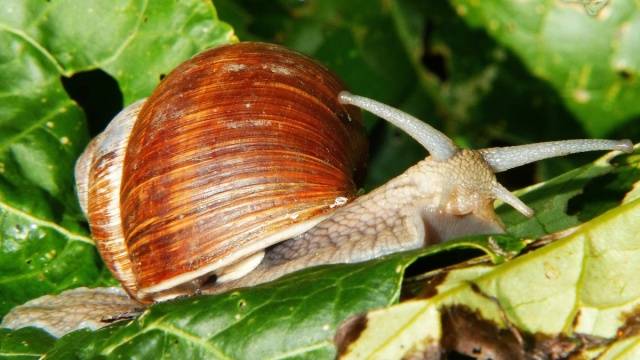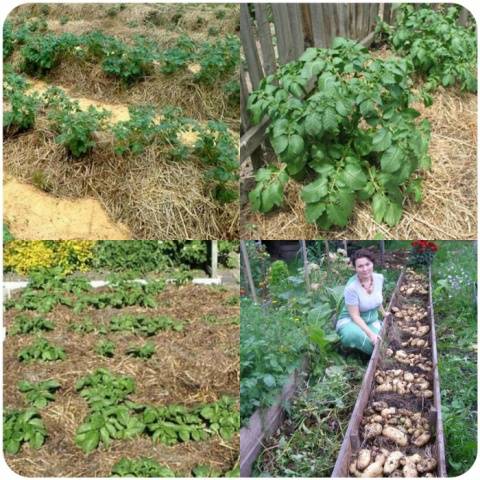Content
The main ingredient of Slavic cuisine for many centuries has been potatoes. Usually, the largest part of the land is left in the garden for planting it. The traditional method of growing potatoes takes a lot of time and effort, even for experienced gardeners. This is due to the fact that you need to start preparing for planting in the fall.
So, you need to apply fertilizer, dig up the ground for the fall. Dig up the soil in the spring and level it. And this is just the beginning. After that, you need to dig holes for tubers, carry out hilling during the growing season, etc. A simpler, but very effective method, invented by peasants back in the 19th century, is planting potatoes under straw.
From the pages of history
In different regions of Russia and Ukraine in the century before last planting potatoes under the straw was the main way of growing everyone's favorite root crop. Not only straw, but also hay, etc., could serve as a covering material.
The fact is that the peasants did not have a lot of free time, and watering, hilling and caring for the crop took a lot of time. That is why enterprising farmers have found a new and very effective planting method. You will learn about the advantages and features of growing crops under hay by reading this article and reading the corresponding video material.
Potato yield under straw
Harvesting begins in the fall, after the tops are dry. Before deciding on the method of growing potatoes, it is important to understand what the yield is when planting potatoes in hay. According to the statements of gardeners from a plot of 10 m2 you can collect about 5-6 buckets.
To harvest in early summer, you can plant the tubers in late winter. But this is possible only if you live in warm regions of the country. To prevent the planted tubers from freezing, the covering layer is doubled.
A good result is achieved due to the fact that planting potatoes under straw in the garden provides the tubers with the necessary temperature... This is very important, since at temperatures over 22oC the growth of culture stops. Due to the high yield, you can reduce the amount of planting material.
Benefits of planting in straw
The main advantage of planting technology is high yield, but there are still some advantages that are worthy of attention:
- Preservation of the temperature balance. Straw and hay remain at a certain temperature, so the tubers will not burn out or stop growing prematurely.
- Many so-called Colorado beetle predators love straw and hay, so you practically don't need to fertilize.
- Slowdown in growth weeds... Weeds can hardly grow through a thick layer of straw, so the need for weeding the beds is also minimized.
- You don't have to dig up the ground before planting potatoes for hay.
- The harvesting process is simplified. For this you need a rake. By removing the top layer of hay, you can harvest the tubers from the surface of the ground. Since cleaning from the soil is not required, after collecting the potatoes, it only needs to be dried and sorted.
What to do if there is nowhere to get straw
If you find it difficult to get straw and get it to the site, then you can use an alternative option. If you have a large plot of land, then you can grow straw on it yourself.
To do this, you need to divide the area that you have allocated for planting the root crop in half. On one half, you plant potatoes, and on the other, immediately after the snow melts, you should mix vetch, oats and peas. In this case, the earth does not have to be dug up before planting.
Leave the oats for the winter. So, in the spring you will have a beautiful even layer of straw on your plot. You will plant potatoes right along it. To do this, dig shallow holes through the straw and sprinkle with earth or humus with a layer of 5 cm.
On half of the land on which potatoes grew last year, you need to sow peas, vetch and oats using a method that is already familiar to you. This will prepare the straw for the next season. As a result, the crop yield will increase, and labor costs will decrease.
When to start planting
Agronomists recommend implementing methods of planting potatoes under straw when the air temperature reaches +8aboutC. It is popularly believed that the best time for planting is bird cherry blossoms. We can say that potatoes are planted in slightly moist, warmed up soil. The planting technique allows you to grow a crop with minimal maintenance.
If it rains frequently in your area, the wet straw will need to be replaced. Since a wet covering material encourages debate. Conversely, if you live in a hot, dry climate, your crop will need to be watered from time to time.
Planting potatoes
To begin with, the soil must be slightly loosened to a depth of 5 cm. The soil must be moist when planting. But if this is not the case, then to activate the growth of shoots, after planting, you need to water the ground.
The thickness and density of the covering material is very important, since if you lay it in a thin layer, the soil will dry out and the culture may disappear. A too thick layer of straw will not allow the sprouts to break through in time. The packed dense layer will lead to disruption of gas and water exchange, which will lead to a decrease in the amount of yield or the complete death of tubers.
One of the planting options is to form shallow trenches about 10 cm deep. Then potatoes are placed in them and lightly sprinkled with loose soil, and from above they are covered with straw 15 cm thick. Due to the faster heating of the soil, seedlings will appear faster. After sprouting, a 15–20 cm layer of straw should be placed between the plants again. It is important to make sure not to damage the sprouts. That's all you need to care for your potatoes. The temperature difference in the soil forms condensation, which contributes to the development of healthy and beneficial tubers.
We also invite you to watch a video on how to properly plant potatoes for hay, because it is better to see once than read many times:
Pest control
After sowing, pests can hide from the heat under the straw, most often these are slugs. They can ruin crops, so it is important to become familiar with slug control methods. They do not tolerate sharp objects, so the ground near the potatoes should be sprinkled with crumbled shells. For these pests, shells are like broken glass. This way, you can save the amount of potatoes planted.
Slugs generally dislike rough surfaces. Therefore, you can spray the soil with lime or fine gravel. It will also make it difficult for the slugs to get to the plants with husk or sawdust mulch. Another effective barrier is copper wires. Garden centers have self-adhesive copper tapes or copper-clad covering material.
Collect the slugs by hand. The easiest way to destroy them is in a solution of soapy water. You can set up traps near plants made of flat stones or pieces of cardboard. Check traps and remove slugs every morning. This is the easiest way to control pests.
As a feed for slugs, you can use a non-toxic product - iron phosphate granules with a wheat flavor. After eating them, the slugs dry out within a few days. However, the feeding procedure should be repeated from time to time.
Conclusion
So, whether to plant potatoes under hay or in the traditional way is up to you. This article provides comprehensive information on planting crops in straw. It is worth noting that if you have little time for the garden, then this technique is suitable for you. You can try it for at least one year, so you can evaluate the technology in practice.
